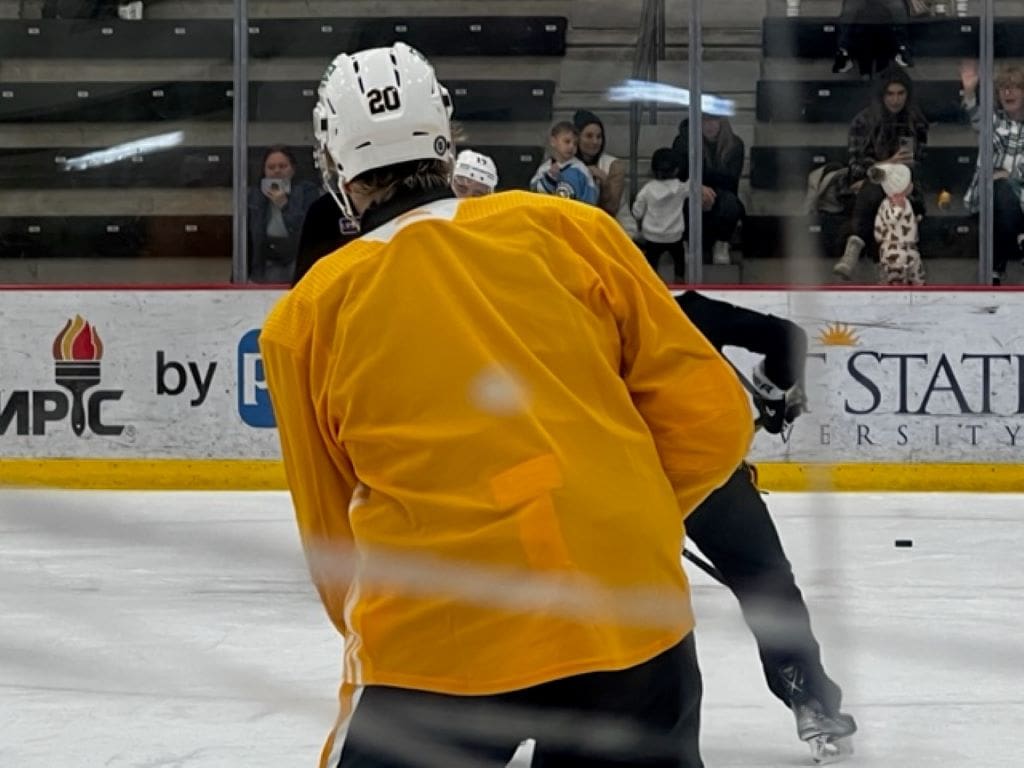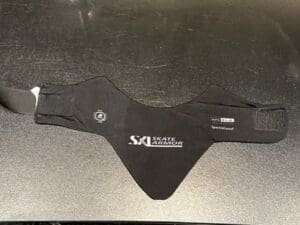Penguins
Adam Johnson Tragedy Spurs Four Penguins to Experiment With Neck Guards

CRANBERRY — It was rather inconspicuous, really.
Looked somewhat like the turtleneck that players sometimes wear beneath their game sweaters.
But the black fabric that covered the necks of four players — Erik Karlsson, Marcus Pettersson, Lars Eller and Ryan Graves — during the Pittsburgh Penguins’ practice Thursday at UPMC Lemieux Sports Complex was not a fashion statement.
Or even something intended to keep them warm
Instead, its purpose was to limit the chances of them suffering a catastrophic injury because of a cut by a skate blade.
The early consensus: The neck guard was somewhat uncomfortable and certainly can — and should — be improved, but the protection it provides makes it worthwhile.
“It definitely takes a little bit of getting used to,” Graves said. “You’re a little warmer, and things like that. But comparing what could happen versus wearing that, it’s a pretty small detail.”
Graves said he had gotten a gash on his chin a few years ago, while playing for New Jersey, while Karlsson, Pettersson and Eller had worn similar equipment while playing in Sweden, where neck guards were mandatory.
“When I was a kid, I always had one on,” Eller said. “I don’t think my parents would let me out without wearing one.”
Pettersson and Eller made a point of saying that they also have made wrist guards — another piece of protective equipment the Penguins are encouraging players to use — a standard part of their game gear. Karlsson noted that cut-resistant socks became popular after his Achilles tendon was sliced by the skate of Penguins winger Matt Cooke in 2013.
“I don’t think anyone was really wearing (those socks) before that,” he said. “Most guys now just wear it, because it’s like a normal sock, anyway.”
The hockey world was reminded last Saturday of how dangerous skate blades can be, when former Pittsburgh Penguins prospect Adam Johnson died after his neck was sliced by one during a professional game in the United Kingdom.
“Obviously, with what just happened, everyone’s trying to avoid that,” said Sidney Crosby, who wore a neck guard in youth and major-junior hockey, but did not have one on Thursday. “Everyone’s going to take a good look at it. We’ll see what happens.”
The Pittsburgh Penguins are requiring players with their American Hockey League team in Wilkes-Barre and their ECHL affiliate in Wheeling to wear both neck and wrist guards, but they are not allowed to do likewise with players on the major-league roster. League officials and the NHL Players Association have discussed the issue this week.
Regardless of whether NHL players eventually are compelled to use neck guards, Eller believes there should be some changes made to the one the four Penguins wore during practice.
“I would change the design a little bit,” he said. “I think they need some feedback from some players, to make them (have) a little bit more (material) in some areas, and a little bit less in others. But I think it’s doable. If they can make it right, I think I would probably wear one going forward.”

This is the neck guard four players wore at practice Thursday.
None of the players who experimented with neck guards during the practice committed to wearing one on a full-time basis, but none of them dismissed the possibility, either.
“I’ll probably try it out for a little bit and see if I can get accustomed to it,” Karlsson said. “Then go from there.”












